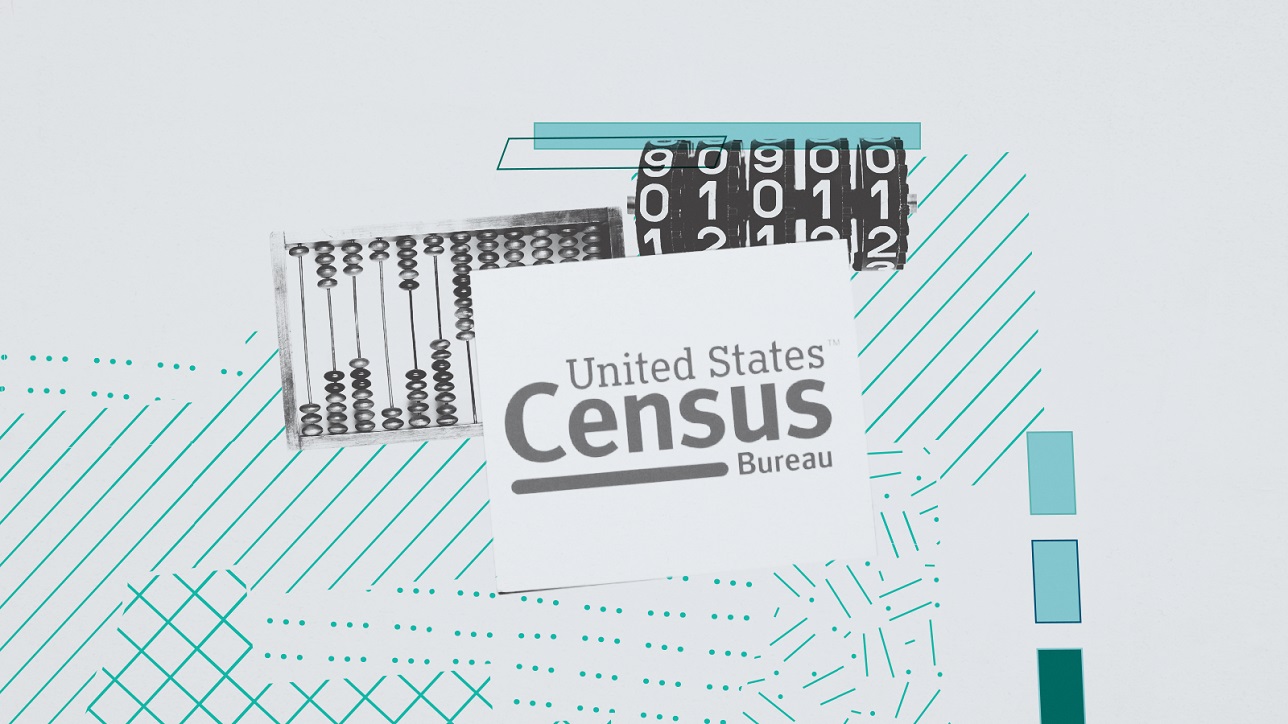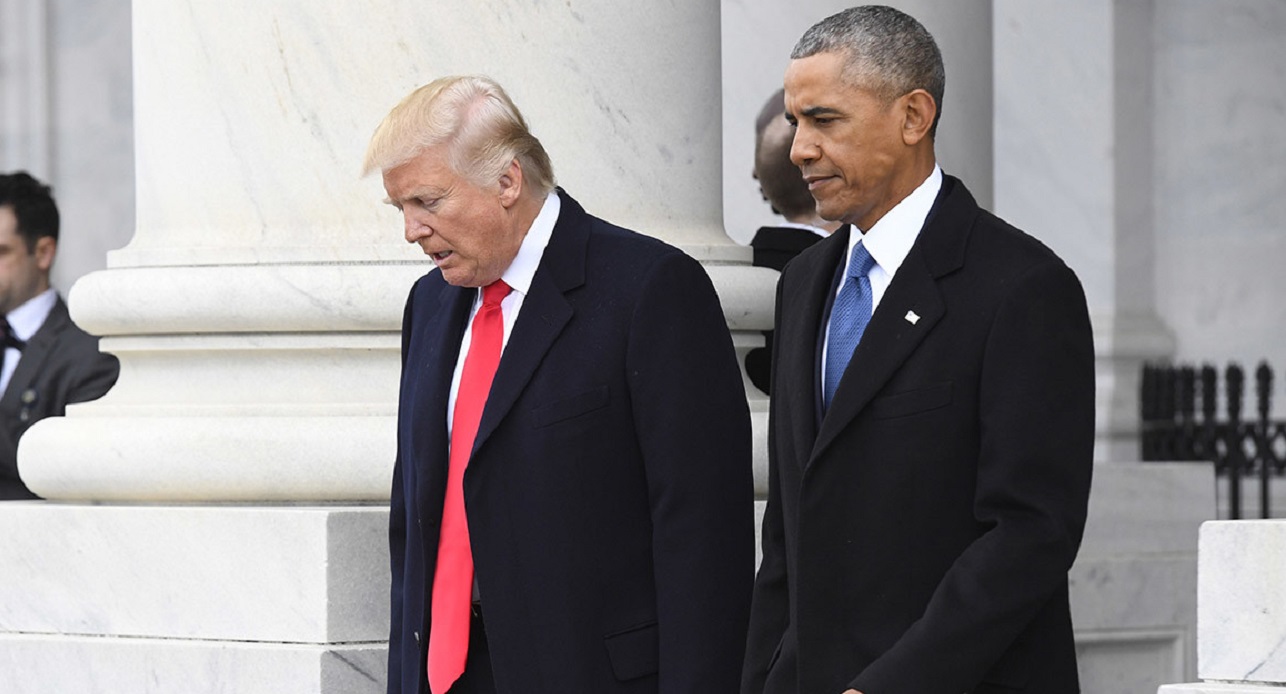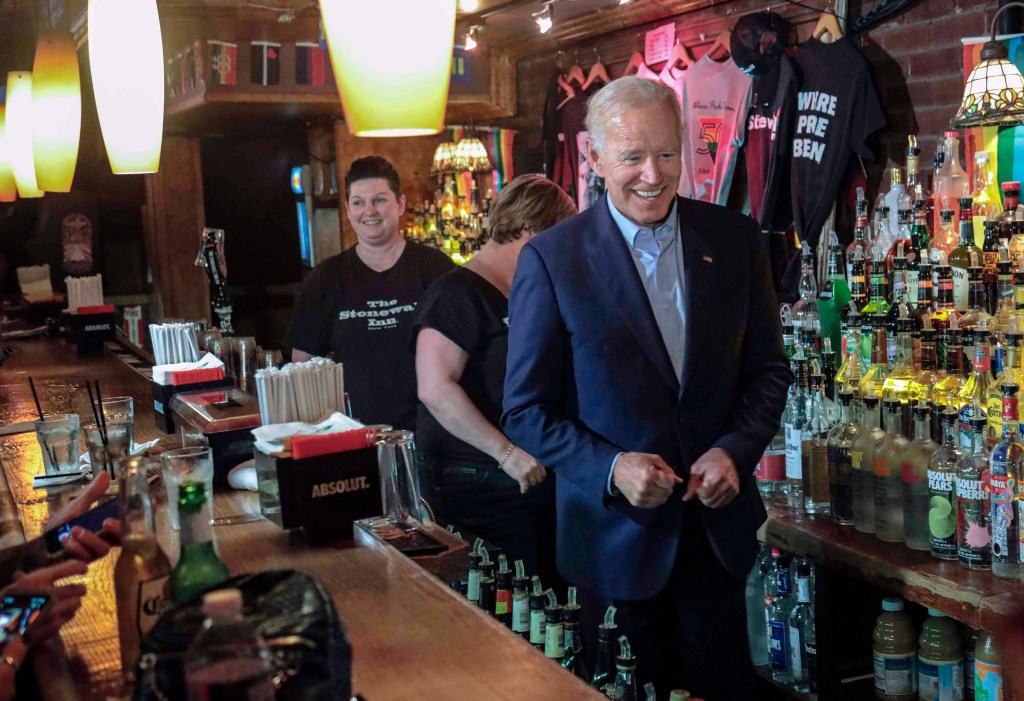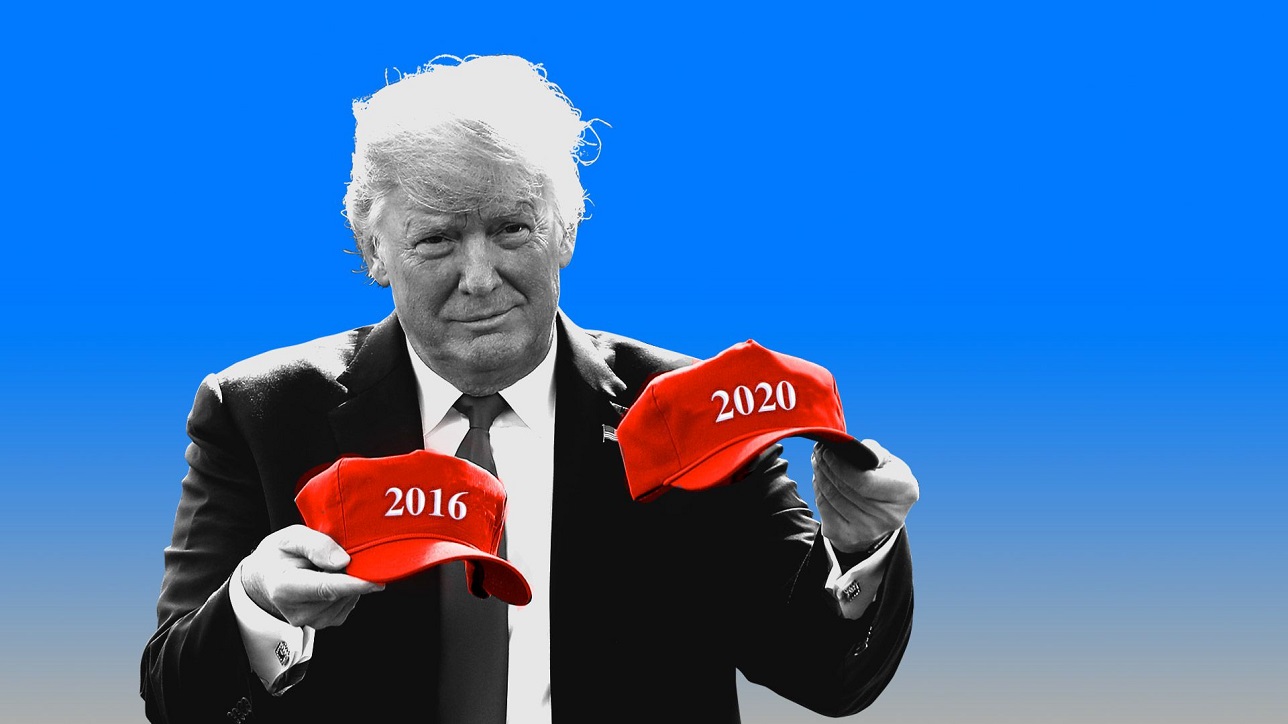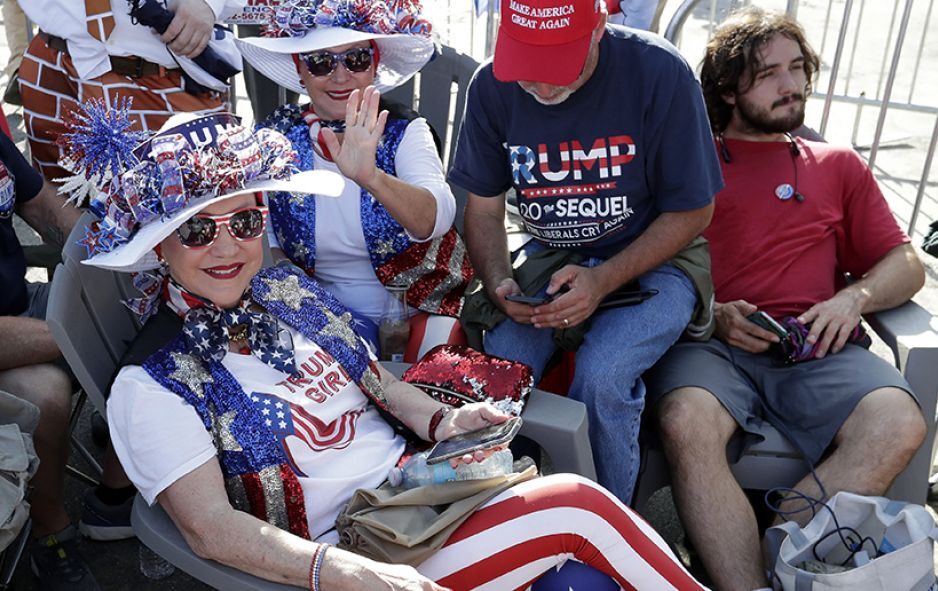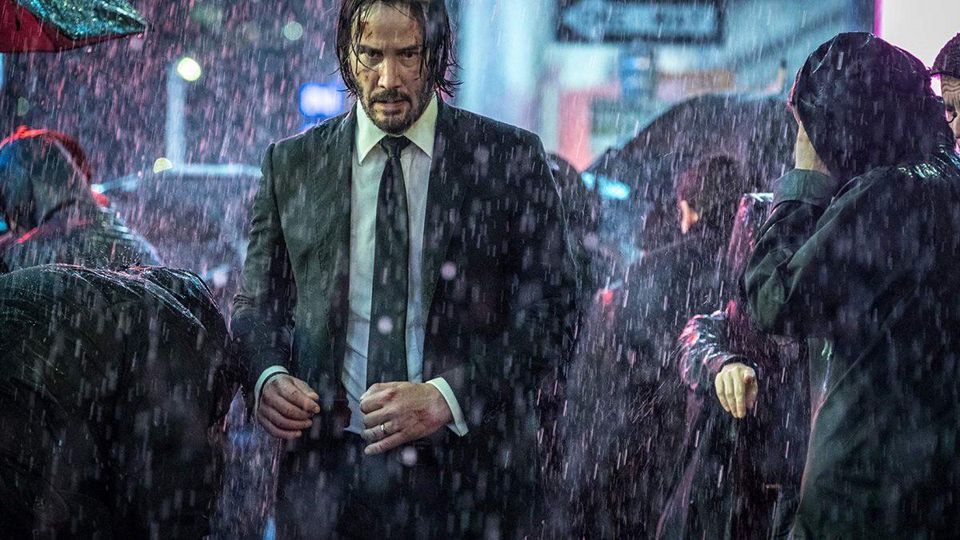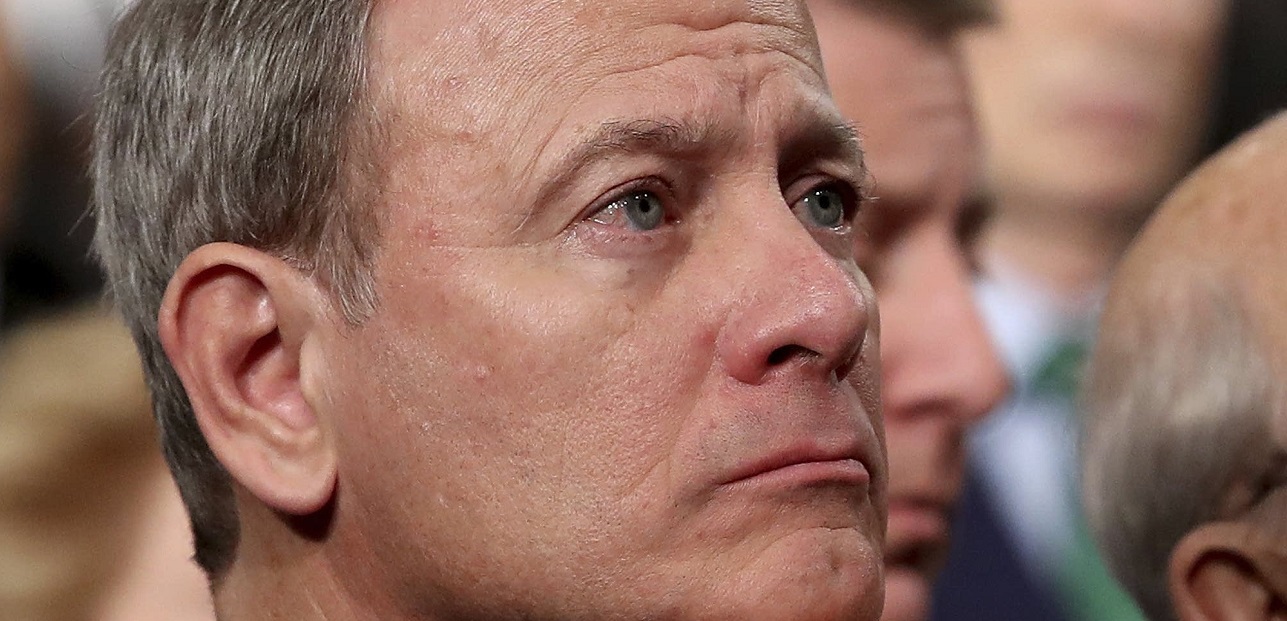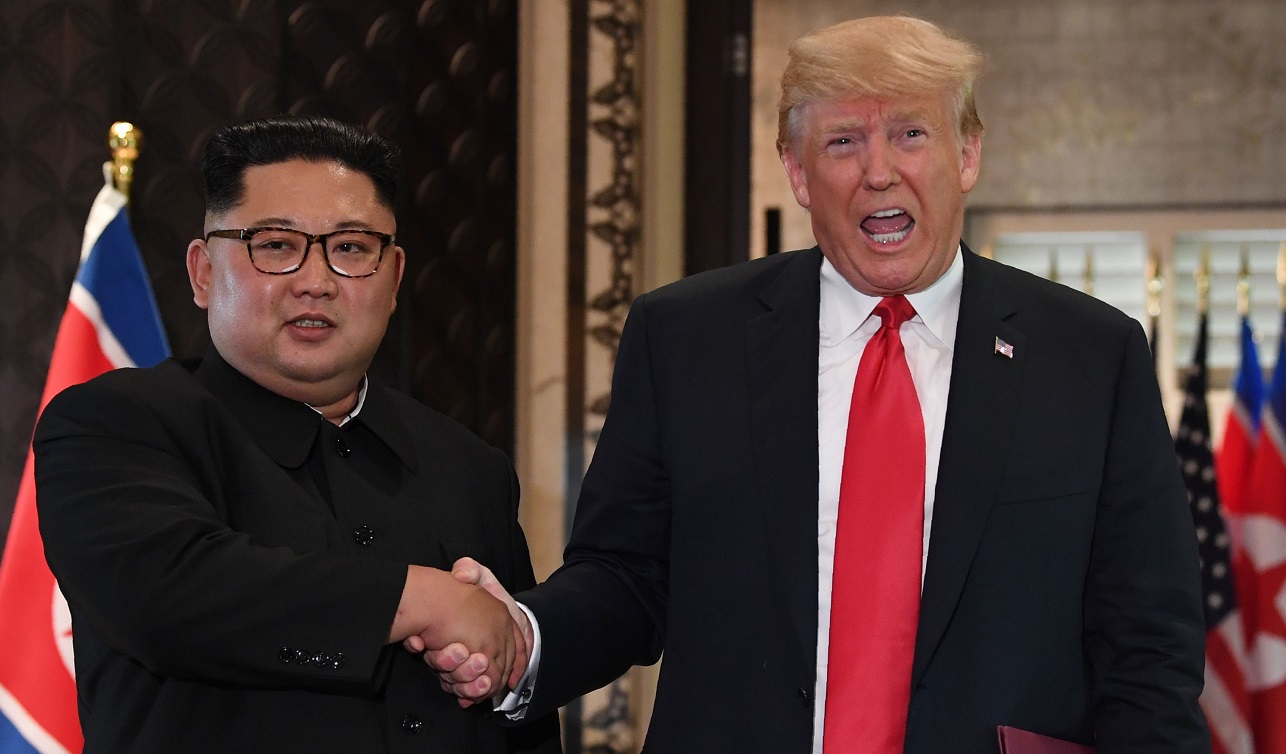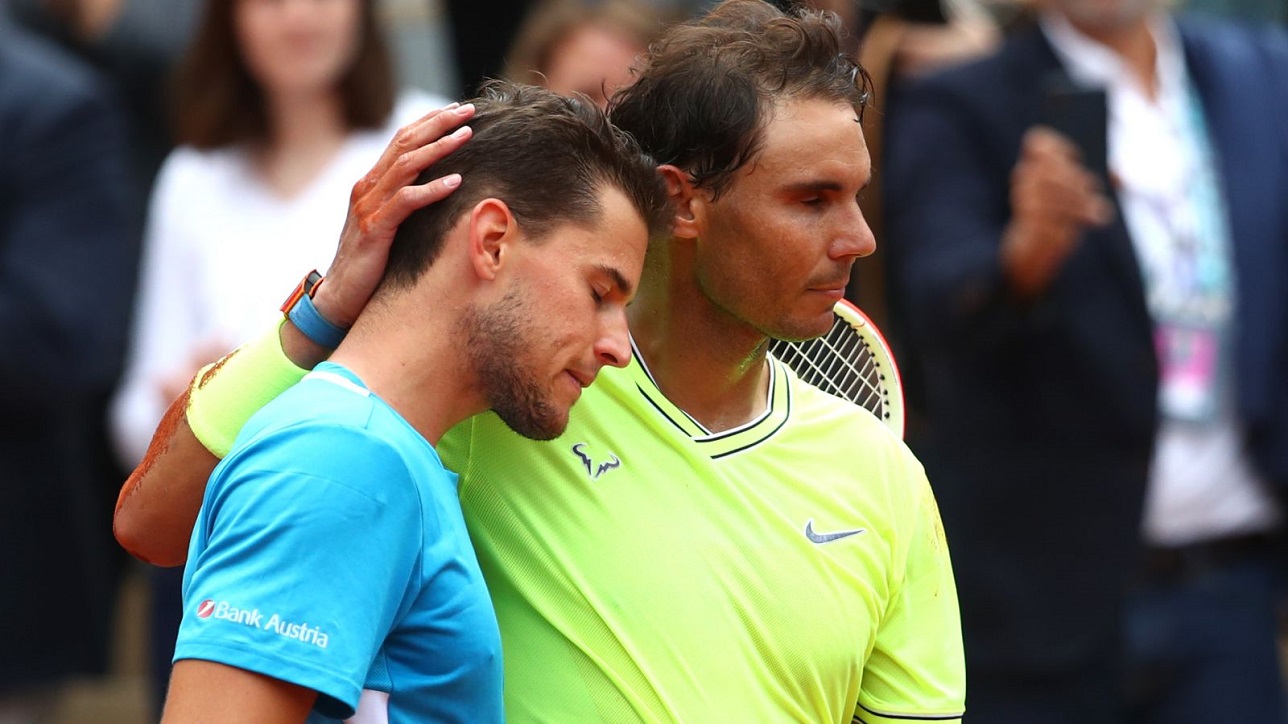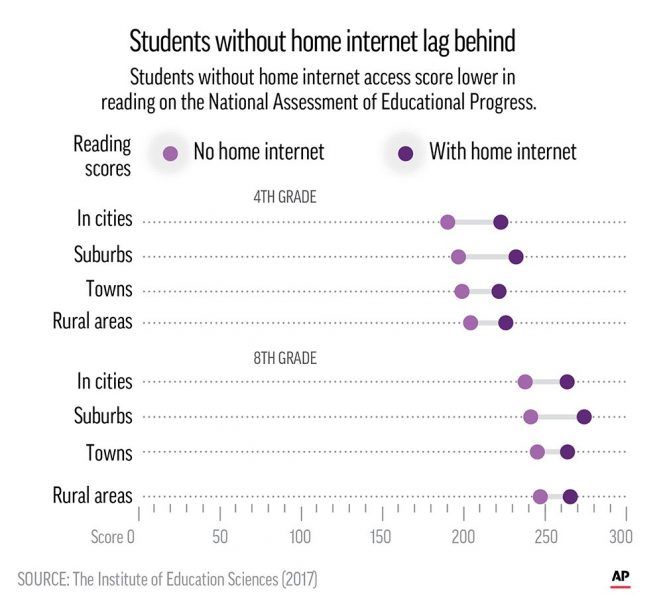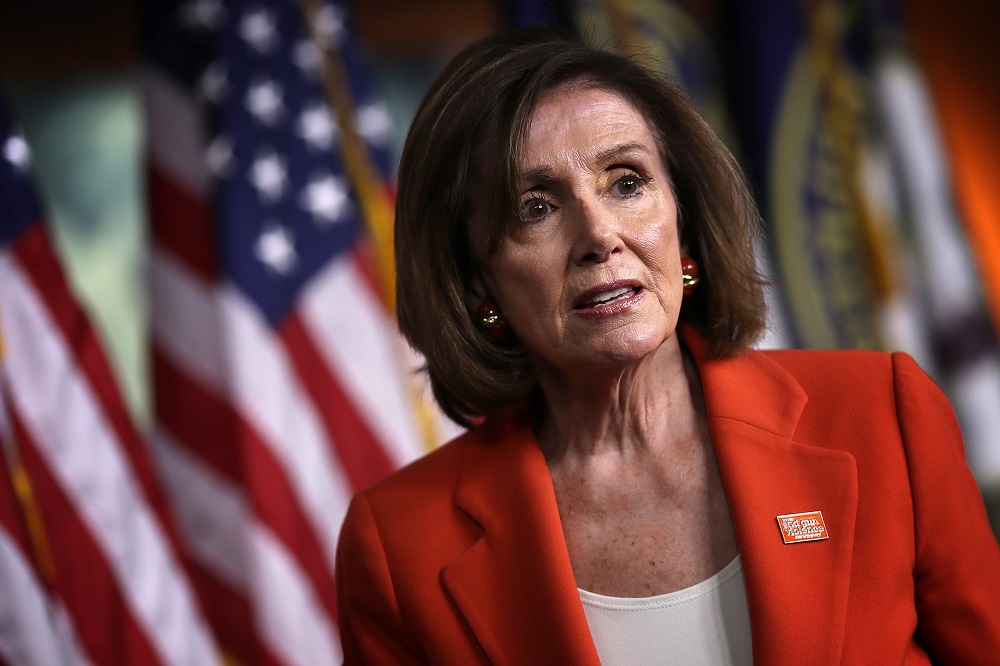Donald Trump continues his four-year-long cycle of wash, rinse and repeat when it comes to saying outrageous things which is followed by an outraged press. Then he follows that with another outrageous claim knowing the press will pounce on that forgetting his original comment. This has worked for him during his campaign and the entire length of his being president.
That Washington Post reported that he is nearing 11K lies in the past three years. He knows this, and he is an expert on wearing people down. That has happened to many Americans who just don’t know what to focus on as he keeps uttering new ‘facts’ while also stating things that continue breaking down the norms we have grown accustomed to when it comes to our presidents.
According to Trump, he has made it so Iran no longer cries out “death to America,” while the border wall with Mexico is proceeding according to his plans. The estate tax has been lifted off the backs of farmers, the remains of U.S. soldiers from North Korea are coming home and China is opening its wallet to the U.S. Treasury for the first time in history.
A closer look at Donald Trump’s facts:
IRAN:
TRUMP,
speaking about Iranians “screaming ‘death to America’” when Barack Obama was in
the White House: “They haven’t screamed ‘death to America’ lately.” — Fox News
interview Friday.
THE
FACTS: Yes, they
have. The death-to-America chant is heard routinely.
The chant,
“marg bar Amreeka” in Farsi, dates back even before Iran’s 1979 Islamic
Revolution. Once used by communists, it was popularized by Ayatollah Ruhollah
Khomeini, the revolution’s figurehead and Iran’s first supreme leader after the
U.S. Embassy takeover by militants.
It remains a
staple of hard-line demonstrations, meetings with current Supreme Leader
Ayatollah Ali Khamenei, official ceremonies, parliamentary sessions and main
Friday prayer services in Tehran and across the country. Some masters of
ceremonies ask audiences to tone it down. But it was heard, for example, from
the crowd this month when Khamenei exhorted thousands to stand up against U.S.
“bullying.”
In one
variation, a demonstrator at Tehran’s Quds rally last month held a sign with
three versions of the slogan: “Death to America” in Farsi, “Death to America”
in Arabic,” ″Down with U.S.A.” in English.
WAGES and TAXES
TRUMP: “Wages are growing, and they are
growing at the fastest rate for — this is something so wonderful — for
blue-collar workers. The biggest percentage increase — blue-collar workers.” —
remarks Tuesday in Council Bluffs, Iowa.
THE
FACTS: He’s claiming
credit for a trend of rising wages for lower-income blue-collar workers that
predates his presidency.
Some of the
gains also reflect higher minimum wages passed at the state and local level;
the Trump administration opposes an increase to the federal minimum wage.
With the
unemployment rate at 3.6%, the lowest since December 1969, employers are
struggling to fill jobs. Despite all the talk of robots and automation,
thousands of restaurants, warehouses, and retail stores still need workers.
They are
offering higher wages and have pushed up pay for the lowest-paid one-quarter of
workers more quickly than for everyone else since 2015. In April, the poorest
25% saw their paychecks increase 4.4% from a year earlier, compared with 3.1%
for the richest one-quarter.
Those gains
are not necessarily flowing to the “blue collar” workers Trump cited. Instead,
when measured by industry, wages are rising more quickly for lower-paid service
workers. Hourly pay for retail workers has risen 4.1% in the past year and 3.8%
for hotel and restaurant employees. Manufacturing workers — the blue collars —
have seen pay rise just 2.2% and construction workers, 3.2%.
ESTATE TAX AKA DEATH TAX
TRUMP: “And to keep your family farms and
ranches in the family, we eliminated the estate tax, also known as the ‘death
tax,’ on the small farms and ranches and other businesses. That was a big one.
… People were having a farm, they loved their children, and they want to
leave it to their children. … And the estate tax was so much, the children would
have to go out and borrow a lot of money from unfriendly bankers, in many
cases. And they’d end up losing the farm, and it was a horrible situation.” —
remarks in Council Bluffs.
THE
FACTS: There still
is an estate tax. More small farms may be off the hook for it as a result of
changes by the Republican-controlled Congress in 2017 but very few farms or
small businesses were subject to the tax even before that happened.
Congress
increased the tax exemption — temporarily — so fewer people will be subject to
those taxes.
Previously,
any assets from estates valued at more than $5.49 million, or nearly $11
million for couples, were subject to the estate tax in 2017. The new law
doubled that minimum for 2018 to $11.2 million, or $22.4 million for couples.
For 2019, the minimums rose to $11.4 million, or $22.8 million for couples.
Those increased minimums will expire at the end of 2025.
According to
an analysis by the nonpartisan Tax Policy Center, only about 80 small farms and
closely held businesses were subject to the estate tax in 2017. Those estates
represent about 1 percent of all taxable estate tax returns.
NORTH KOREA
TRUMP: “I think we’re going to do very
well with North Korea over a period of time. I’m in no rush. … Our
remains are coming back; you saw the beautiful ceremony in Hawaii with Mike
Pence. We’re getting the remains back.” — joint news conference Wednesday with
Poland’s president.
THE
FACTS: The U.S. is
not currently getting additional remains of American service members killed
during the Korean War.
With
U.S.-North Korea relations souring, the Pentagon said last month it had
suspended its efforts to arrange negotiations this year on recovering
additional remains of American service members. The Pentagon said it hoped to
reach agreement for recovery operations in 2020.
The Defense
POW-MIA Accounting Agency said it has had no communication with North Korean
authorities since the Vietnam summit between Trump and North Korean leader Kim
Jong Un in February. That meeting focused on the North’s nuclear weapons and
followed a June 2018 summit where Kim committed to permitting a resumption of
U.S. remains recovery; that effort had been suspended by the U.S. in 2005.
The agency
said it had “reached the point where we can no longer effectively plan, coordinate,
and conduct field operations” with the North during this budget year, which
ends Sept. 30.
Last summer,
in line with the first Trump-Kim summit in June, the North turned over 55 boxes
of what it said were the remains of an undetermined number of U.S service
members killed in the North during the 1950-53 war. So far, six Americans have
been identified from the 55 boxes.
U.S.
officials have said the North has suggested in recent years that it holds
perhaps 200 sets of American war remains. Thousands more are unrecovered from
battlefields and former POW camps.
The Pentagon
estimates that about 5,300 Americans were lost in North Korea.
BORDER WALL
TRUMP: “We’re building a wall … And by
next year, at the end of the year, we’re going to have close to 500 miles of
wall.” — remarks Tuesday at the Republican Party of Iowa annual dinner.
TRUMP: “We’re going to have close to 500
miles of wall built by the end of next year. That’s a lot. And we’re moving
along very rapidly. We won the big court case, as you know, the other day. And
that was a big victory for us.” — remarks Monday with Indianapolis 500
champions.
THE
FACTS: He’s being
overly optimistic. It’s unclear how Trump arrives at 500 miles (800 km), but he
would have to prevail in legal challenges to his declaration of a national
emergency or get Congress to cough up more money to get anywhere close. Those
are big assumptions. And by far the majority of the wall he’s talking about is
replacement barrier, not new miles of construction.
So far, the
administration has awarded contracts for 247 miles (395 km) of wall
construction, but more than half comes from Defense Department money available
under Trump’s Feb. 15 emergency declaration. On May 24, a federal judge in
California who was appointed by Obama blocked Trump from building key sections
of the wall with that money. In a separate case, a federal judge in the
nation’s capital who was appointed by Trump sided with the administration, but
that ruling has no effect while the California injunction is in place.
Even if
Trump prevails in court, all but 17 miles (27 km) of his awarded contracts
replace existing barriers.
The White
House says it has identified up to $8.1 billion in potential money under the
national emergency, mostly from the Defense Department.
Customs and
Border Protection officials say the administration wants Congress to finance
206 miles (330 km) next year. The chances of the Democratic-controlled House
backing that are between slim and none.
TRADE
TRUMP: “Right now, we’re getting 25% on
$250 billion worth of goods. That’s a lot of money that’s pouring into our
treasury. We’ve never gotten 10 cents from China. Now we’re getting a lot of
money from China.” — remarks Monday.
TRUMP: “We’re taking in, right now,
billions and billions of dollars in tariffs, and they’re subsidizing product.”
— remarks Tuesday in Council Bluffs.
THE
FACTS: He’s
incorrect. The tariffs
he’s raised on imports from China are primarily if not entirely a tax on
U.S. consumers and businesses, not a source of significant revenue coming into
the country.
A study in
March by economists from the Federal Reserve Bank of New York, Columbia
University and Princeton University, before the latest escalation, found that
the public and U.S. companies were paying $3 billion a month in higher taxes
from the trade dispute with China, suffering $1.4 billion a month in lost
efficiency and absorbing the entire impact.
It’s also
false that the U.S. never collected a dime in tariffs before he took action.
Tariffs on goods from China are not remotely new. They are simply higher in
some cases than they were before. Tariffs go back to the beginning of the U.S.
and were once a leading source of revenue for the government. Not in modern
times. They equate to less than 1% of federal spending.
TRADE DEFICITS
TRUMP: “Look, without tariffs, we would be
captive to every country, and we have been for many years. That’s why we have
an $800 billion trading deficit for years. We lose a fortune with virtually
every country. They take advantage of us in every way possible.” — CNBC
interview Monday.
THE
FACTS: Trump isn’t
telling the whole story about trade deficits.
When he
refers to $800 billion trade gaps, he’s only talking about the deficit in goods
such as cars and aircraft. He leaves out services — such as banking, tourism
and education — in which the U.S. runs substantial trade surpluses that
partially offset persistent deficits in goods. The goods and services deficit
peaked at $762 billion in 2006. Last year, the United States ran a record $887
billion deficit in goods and a $260 billion surplus in services, which added up
to an overall deficit of more than $627 billion.
The U.S.
does tend to run trade deficits with most other major economies. But there are
exceptions, such as Canada (a nearly $4 billion surplus last year), Singapore
($18 billion) and Britain ($19 billion).
Mainstream
economists reject Trump’s argument that the deficits arise from other countries
taking advantage of the United States. They see the trade gaps as the result of
an economic reality that probably won’t bend to tariffs and other changes in
trade policy: Americans buy more than they produce, and imports fill the gap.
U.S. exports
are also hurt by the American dollar’s status as the world’s currency. The
dollar is usually in high demand because it is used in so many global
transactions. That means the dollar is persistently strong, raising prices of
U.S. products and putting American companies at a disadvantage in foreign
markets.
FRENCH WINE TARIFFS
TRUMP: “You know, France charges us a lot
for the wine and yet we charge them little for French wine. So the wineries
come to me and they say — the California guys, they come to me: ‘Sir, we are
paying a lot of money to put our products into France and you’re letting – meaning,
this country is allowing this French wine which is great, we have great wine,
too, allowing it to come in for nothing. It is not fair.’” — interview Monday
with CNBC.
THE
FACTS: Trump, who’s
been in the wine business, is technically wrong about France applying tariffs.
The European Union does.
He’s right
about a disparity in wine duties.
Tariffs vary
by alcohol content and other factors. A bottle of white American wine with 13
percent alcohol content imported into the EU carries a customs duty of 10 euro
cents (just over 11 U.S. cents). A bottle of white wine from the EU exported to
the United States has a customs duty of 5 U.S. cents.
The gap in
duties is narrower for red wine with an alcohol content of 14.5 percent.
Bulk wines
are another story. The U.S. tariff is double the EU one, a break for American
producers because bulk wine represents 25% of the volume of U.S. wine coming
into the EU, according to the French wine exporter federation.
The value of
wine imported by France has jumped 200% over a decade. Americans are the top
consumers of French wine exports.
RUSSIA
INVESTIGATION
TRUMP, on special counsel Robert Mueller’s
report: “The Mueller report spoke. … It said, ‘No collusion and no
obstruction and no nothing.’ And, in fact, it said we actually rebuffed your
friends from Russia; that we actually pushed them back — we rebuffed them.” —
remarks Wednesday in Oval Office.
THE
FACTS: He’s wrong to
repeat the claim that the Mueller report found no collusion between Russia
and the Trump campaign; it’s also false that his campaign in 2016 denied all
access to Russians. Nor did the special counsel’s report exonerate Trump on the
question of whether he obstructed justice.
Mueller’s two-year investigation and other scrutiny revealed
a multitude of meetings with Russians. Among them: Donald Trump Jr.’s meeting
with a Russian lawyer who had promised dirt on Clinton.
On
collusion, Mueller said he did not assess whether that occurred because it is
not a legal term.
He looked
into a potential criminal conspiracy between Russia and the Trump campaign and
said the investigation did not collect sufficient evidence to establish
criminal charges on that front.
Mueller
noted some Trump campaign officials had declined to testify under the Fifth
Amendment or had provided false or incomplete testimony, making it difficult to
get a complete picture of what happened during the 2016 campaign. The special
counsel wrote that he “cannot rule out the possibility” that unavailable
information could have cast a different light on the investigation’s findings.
In an
interview broadcast Wednesday with ABC News, Trump said if a foreign power
offered dirt on his 2020 opponent, he’d be
open to accepting it and that he’d have no obligation to call in
the FBI. “I think I’d want to hear it,” Trump said. “There’s nothing wrong with
listening.”
LINDSEY GRAHAM DEFENSE
REPUBLICAN
SEN. LINDSEY GRAHAM,
Judiciary Committee chairman, in response to Trump’s comments that he’d be open
to accepting political dirt from foreign adversaries like Russia: “The outrage
some of my Democratic colleagues are raising about President Trump’s comments
will hopefully be met with equal outrage that their own party hired a foreign
national to do opposition research on President Trump’s campaign.” — tweet
Thursday.
THE
FACTS: Graham is
making an unequal comparison.
He seeks
to turn the tables on Democrats by
pointing to their use of a dossier of anti-Trump research produced by
Christopher Steele, a former British intelligence officer, that was financed by
the Democratic Party and Hillary Clinton’s campaign. Graham also insists on
“equal outrage” over Democrats using that information from a former
intelligence officer of Britain, an ally with a history of shared intelligence
with the U.S. That’s a different story from a foreign adversary such as Russia,
which the Mueller report concluded had engaged in “sweeping and systematic”
interference in the 2016 presidential election.
Moreover,
Steele was hired as a private citizen, though one with intelligence contacts.
The Mueller
report found multiple contacts between the Trump campaign and Russia, and the
report said it established that “the Russian government perceived it would
benefit from a Trump presidency and worked to secure that outcome, and that the
Campaign expected it would benefit electorally from information stolen and
released through Russian efforts.”
Trump and
his GOP allies typically point to the Steele dossier as the basis for the
Russia probe. But the FBI’s investigation began months before it received the
dossier.
RUSSIA COOPERATION
TRUMP: “The Democrats were very unhappy
with the Mueller report. So now they’re trying to do a do-over or a redo. And
we’re not doing that. We gave them everything. We were the most transparent
presidency in history.” — Oval Office remarks Wednesday.
THE
FACTS: It’s highly
dubious to say Trump was fully cooperative in the Russia investigation.
Trump
declined to sit for an interview with Mueller’s team, gave written answers that
investigators described as “inadequate” and “incomplete,” said more than 30
times that he could not remember something he was asked about in writing, and —
according to the report — tried to get aides to fire Mueller or otherwise shut
or limit the inquiry.
In the end,
the Mueller report found no criminal conspiracy between the Trump campaign and
Russia but left open the question of whether Trump obstructed justice.
According to
the report, Mueller’s team declined to make a prosecutorial judgment on whether
to charge partly because of a Justice Department legal opinion that said
sitting presidents shouldn’t be indicted. The report instead factually laid out
instances in which Trump might have obstructed justice, specifically leaving it
open for Congress to take up the matter.
FEDERAL RESERVE
TRUMP: “We have people on the Fed that
really weren’t, you know, they’re not
my people, but they certainly didn’t listen to me because they made a big
mistake.” — CNBC interview.
THE
FACTS: Actually,
most of the members on the Fed’s Board of Governors owe their jobs to Trump.
In addition
to choosing Jerome Powell, a Republican whom Obama had named to the Fed board,
to be chairman, Trump has filled three other vacancies on the board in his
first two years in office. Lael Brainard is the only Democrat on the board.
There are
still two vacancies on the seven-member board. Trump had earlier intended to
nominate two political allies — Herman Cain and Stephen Moore — but both later
withdrew in the face of sharp opposition from critics.
AUTOMOBILE INDUSTRY
TRUMP: “Tariffs are a great negotiating
tool, a great revenue producer and, most importantly, a powerful way to get …
companies to come to the U.S.A., and to get companies that have left us for
other lands to come back home. We stupidly lost 30% of our auto business to
Mexico.” — tweets Tuesday.
TRUMP: “They took 30% of our automobile
companies. They moved
into Mexico. All of the people got fired.” — interview Monday with CNBC.
THE
FACTS: He’s
incorrect that Mexico took 30% of the U.S. automobile business in the years
since the North American Free Trade Agreement took effect in 1994.
In 2017, 14%
of the vehicles sold in the U.S. were imported
from Mexico, according to the Center for Automotive Research, a think tank in
Ann Arbor, Michigan. Parts imported from Mexico exceed 30%.
HIGHER TARIFFS
TRUMP: “If the Tariffs went on at the
higher level, they would all come back.” — tweet Tuesday.
TRUMP: “What will happen is the companies
will move into the United States, back where they came from. … They would all
move back if they had to pay a 25% tax or tariff.” — interview Monday with
CNBC.
THE
FACTS: He’s wrong to
assume that auto companies in Mexico would immediately move back to the U.S. if
there were a 25% tariff on Mexican-made vehicles and parts.
It takes
three years or four years minimum to plan, equip and build an auto assembly
plant, so there would be little immediate impact on production or jobs. Auto
and parts makers are global companies, and they would also look to countries
without tariffs as a place to move their factories. The companies could also
just wait until after the 2020 election, hoping that if Trump is defeated, the
next president would get rid of the tariffs.
“They’re not
going to invest in duplicative capacity in response to short-term policy
incentives,” said Kristen Dziczek, a vice president at the Center for
Automotive Research.
It is
possible that some production could be shifted back to the United States.
General Motors, for instance, makes about 39% of its full-size pickup trucks at
a factory in Silao, Mexico, mainly light-duty versions, according to analysts
at Morningstar. If the U.S. imposed a 25% tariff on assembled automobiles, GM
could shift some production to a factory in Fort Wayne, Indiana, that also
makes light-duty pickups. But there are limits. That plant already is running
on three shifts and is almost near its maximum capacity.
Tariffs on
Mexico probably would cost auto jobs in the U.S., too, because Mexico would
almost certainly retaliate with tariffs of its own. Tariffs on both sides would
raise prices of vehicles, because automakers probably would pass the charges
onto their customers.
Industry
experts say higher prices would cause more buyers to shift into the
used-vehicle market, cutting into new-vehicle sales. Tariffs could be higher
than 25% because parts go back and forth across the border multiple times in a
highly integrated supply chain.
Vehicles
built in Mexico get 20% to 30% of their parts from the U.S., so the tariffs
would drive up prices there. That would hit lower-income people hard because
automakers produce many lower-priced new vehicles in Mexico to take advantage
of cheaper labor. About 62% of U.S. vehicle and parts exports go to Canada and
Mexico, according to the Center for Automotive Research.
Tariffs
would add $1,300 to $4,500 to the price of vehicles based just on the cost of
parts, the center estimated.


